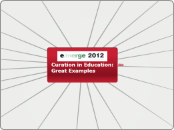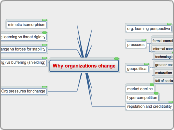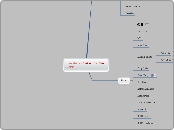Online Learning
High Tech Tools
Online Learning System
Learning Object Repository
ePortfolio
iPhone
iTunes U
Posts
Podcasts
Podcast
Media Servers
Camtasia
Classroom
In D2L
Assessing Discussions
By Message
Hollistically
Online Quizzes
Respondus LockDown Browser
Feedback
Plagiarism Detction
Grades Tool
Grade Book
Online Elements
Online Welcome
Online Syllabus
Online enrichment
Computers
Elmos
Smartboards
Whiteboard
MultiTouch Technology
Audacity
Quizmaker
Engage
Presenter
Tools Outline
Requirements for All Instructors
Types of courses by delivery
Totally Online
Hybrid
Half face to face
Half online
Face to face
Has online components
Portal
Faculty Pages
Rubrics
Expectations
eMentors
"How to" Protocols for Teaching Online
LMS Training Required
Requirements for Courses
Evaluations
Governance
Setup
Forms
Policies and Procedures
Resources For All Instructors
Media Conversion Services
Media Producton Services
Florida Online Academy
Online Tool Tutorials
Faculty Innovation
College of Online Studies
Obsolete Couse Listings
PM Declaratioin of Interdependence
PM Declaration of Interdependence
From Wikipedia, the free encyclopedia
The PM Declaration of interdependence is a set of six management principles initially intended for project managers of Agile Software Development projects. Later on, the name was changed to "The declaration of interdependence for modern management", as it was realized that the principles might be applicable to other management situations.
[edit]Origins
After the Manifesto for Agile Software Development was written in 2001, David Anderson, Sanjiv Augustine, Christopher Avery, Alistair Cockburn, Mike Cohn, Doug DeCarlo, Donna Fitzgerald, Jim Highsmith, Ole Jepsen, Lowell Lindstrom, Todd Little, Kent McDonald, Pollyanna Pixton, Preston Smith and Robert Wysocki worked to see what management principles might be required in order to achieve an Agile Mindset in product and project management. In 2005, they published the agile project management "Declaration of Interdependence" [1]. The six principles they felt essential to modern project management (and to much of management in general).
[edit]The principles
(Quoted from [1])
"We ...
increase return on investment by -- making continuous flow of value our focus.
deliver reliable results by -- engaging customers in frequent interactions and shared ownership.
expect uncertainty and manage for it through -- iterations, anticipation and adaptation.
unleash creativity and innovation by -- recognizing that individuals are the ultimate source of value, and creating an environment where they can make a difference.
boost performance through -- group accountability for results and shared responsibility for team effectiveness.
improve effectiveness and reliability through -- situationally specific strategies, processes and practices."
[edit]References
^ a b [1]The text on Alistair's Cockburn's website.
Vision
Vision
Daytona State College’s College of Online Studies is an integral part of the College’s Outreach and will be seen as the first choice for off-campus, technology-based access to anywhere–anytime lifelong learning resources for 21st Century learners.
Every course offered through the College of Online Studies exemplifies commitment to academic quality that is the hallmark of Daytona State College’s educational offerings. Courses are developed and taught by faculty and faculty affiliated with Daytona State College. All faculty hold credentials required by the Southern Association of Colleges and Schools. In addition, College of Online Studies faculty have a special background in online learning.
The Vision of Daytona State College’s College of Online Studies is to provide learners with access to quality academic programs and resources in a sustainable, technology-based learning environment.
The Vision for the College of Online Studies will be achieved by implementing the following:
• Support faculty in the creation of learning communities at a distance.
• Provide mechanisms by which learners can establish a lifelong relationship with the College and its resources.
• Maintain easy access to online offerings.
• Provide high-quality academic services to online learners.
• Offer comprehensive and cost effective degree and certificate programs.
• Deliver quality student-centered support services.
Florida Online
Student Orientation to Online Learning System
IT Help
Compare and Contrast with Face to Face
Consistency and Creativity
Edit Course
When any of the tools is openend, a menu of all the tools appears in the pane at the left side of the screen
The tools taught in this module are found on the Course Administration page
On that page, tools are grouped under General, Tools or Administration
Reach that page by using the NavBar link called "Edit Course"
Best practice emphasize simplicity
Best practices emphasize consistency
Keeps the community aspect
Wants tools to be consistent and comfortable
Studetns need a uniform and consistent link
Consistent items
Maintain location of default NavBar links
Zone LR
Logout
Help
Zone LL
Schedule
Quizzes
Discussions
Grades
Dropbox
Content
Zone UR
Date
Welcome
Zone UL
Email
Classlist
My Home
Course Home
Maintain default widgets
Events
Updates
News
Be creative in presenting your content
Be aware of the load on the system
Be engaged
Stay consistent
Helps your students
Reduces confusion for students taking multiple courses
Think about your audience
Keeps navigation consistent
Universals
Evaluations of Your Courses
Fostering a Community of Learners
Strive for Presence
Maslow applies to both
Culture Shock
Not just an online thing
My College Experience
Culture shock was a deliverate part of my college experience. The school hit us with Existenialism, other religions, cultural relativism and other things designed to shake us up.
Assessing Student Work
Using Media to Teach
Guiding Discussions
Making Assignments
Preparing Learning Activities
Test Prep
Schedules
Course Start and End Dates
Face to Face has Online Elements
Teaching and Learning
Overview:
Knowles' theory of andragogy is an attempt to develop a theory specifically for adult learning. Knowles emphasizes that adults are self-directed and expect to take responsibility for decisions. Adult learning programs must accommodate this fundamental aspect.
Andragogy makes the following assumptions about the design of learning: (1) Adults need to know why they need to learn something (2) Adults need to learn experientially, (3) Adults approach learning as problem-solving, and (4) Adults learn best when the topic is of immediate value.
In practical terms, andragogy means that instruction for adults needs to focus more on the process and less on the content being taught. Strategies such as case studies, role playing, simulations, and self-evaluation are most useful. Instructors adopt a role of facilitator or resource rather than lecturer or grader.
Scope/Application:
Andragogy applies to any form of adult learning and has been used extensively in the design of organizational training programs (especially for "soft skill" domains such as management development).
Example:
Knowles (1984, Appendix D) provides an example of applying andragogy principles to the design of personal computer training:
1. There is a need to explain why specific things are being taught (e.g., certain commands, functions, operations, etc.)
2. Instruction should be task-oriented instead of memorization -- learning activities should be in the context of common tasks to be performed.
3. Instruction should take into account the wide range of different backgrounds of learners; learning materials and activities should allow for different levels/types of previous experience with computers.
4. Since adults are self-directed, instruction should allow learners to discover things for themselves, providing guidance and help when mistakes are made.
(See computers for further discussion of this topic).
Principles:
1. Adults need to be involved in the planning and evaluation of their instruction.
2. Experience (including mistakes) provides the basis for learning activities.
3. Adults are most interested in learning subjects that have immediate relevance to their job or personal life.
4. Adult learning is problem-centered rather than content-oriented.
References:
Knowles, M. (1975). Self-Directed Learning. Chicago: Follet.
Knowles, M. (1984). The Adult Learner: A Neglected Species (3rd Ed.). Houston, TX: Gulf Publishing.
Knowles, M. (1984). Andragogy in Action. San Francisco: Jossey-Bass.
Community
Assessment of "Community"
Choose Option 1 or Option 2.
Option 1:
Choose any course with which you are familiar. Assess that course in terms of its strengths and weaknesses in facilitating community. Use the concepts from "Community, Courses and Maslow's Hierarchy" in your critique.
Option 2:
Tell us how we have done as community builders in creating and presenting this course.
Assess the Florida Online Academy in terms of its sthrengths and weaknesses in facilitating community.
Use the concepts from "Community, Courses and Maslow's Hierarchy" in your critique.
Assessment
Scenarios to Discuss
When and Why to Use Groups
Managing and Motivating article
Using Groups in D2L
Encourage More "Intense" Discussions
Encourage Collaboration
Organize
When and Why to Use Course Email
Sidebar discussions
One on one
Taking a student asside in a class
Discussions and Community
Many to Many Communication
Synchronous vs. Asynchronous
Introvert vs. Extravert
Community, Courses and Maslow's Hierarchy
Intro
Instrucional System Development
Media Selection
Guided by Learning Styles
Guided by Objectives
Learning Activities
Content Delivery
Course Organization
Learning Styles
Assessments
Objectives
Task Analysis
Outcome based learning
Text
Online Assessments
Media selection
Learning Outcomes
Academic Integrity
College Policy
Redefining Cheating
WSJ: Legaized Cheating
Norman: In Defense
Culture of Integrity
Theories
Glasser, Knowles and Gardner
Glasser's 5 Senses
Learners retain
How much people remember when exposed to
various learning methods based on the five senses
(see, hear, feel, touch and smell)
* 10 percent of what they read (see and often touch)
* 20 percent of what they hear
* 30 percent of what they see
* 50 percent of what they see and hear
* 70 percent of what they say or discuss with others (primarily “hear” plus critical listening skills)
* 80 percent of what they experience personally (can be any or all of the five senses engaged in an
activity)
* 90 percent of what they say and do (“hear” plus usually one or more of the other five senses engaged in
an activity)
* 95 percent of what they teach to someone else (at least one of the five senses engaged in an activity
plus critical listening or observation skills)
Retenion rates are proportioanl to the number of senses engaged
All Learning is Social
Cognitive Theory
Thinking can't be taught until the brain has facts to think about
Integration into deep structures
7 Plus or Minus 2
Andragogy vs Pedagogy
Pedagogy
Andragogy
Differences
Can Incorporare Internet Resources
Work with OLS Administrators
Accessiblility
Equal Opportunity Institution
Daytona State College pledges nondiscrimination, equal access, equal educational opportunity and equal employment opportunity to all persons regardless of race, ethnicity, religion, national origin, age, gender, disability, marital status, veteran status, ancestry or political affiliation. Our pledge covers recruitment, admission, registration, financial help, counseling, advising, course offerings, extracurricular programs, facilities, health services, athletics, employment and its privileges and benefits.
Media Server
Shared Tools
Etherpad
Google Docs
Mindomo
Checkvist
Social Media
Others
LinkedIn
YouTube
Facebook
Twitter
Media
Media Online
Work with LMS Administrators
Welcome to LMS 105
NARRATOR
Welcome to the module of mixed messages. In this module we teach you how to use some advanced tools to make changes to your course homepage. At the same time, we ask that you refrain from making changes to your course homepage. Thus, the mixed message!
Stay Consistent
NARRATOR
We ask you to be consistent. Emerson may have said "a foolish consistency is hobgoblin of little minds" but we argue that consistency in the service of community is not foolish. Consistency helps your students navigate the courses offered by the college. Being consistent in the navigation and controls reduces confusion for your students.
Consistent Items
NARRATOR
Be mindful of consistency in the items on the Course Home page, the links on the NavBar and the Widgets on the page.
NARRATOR
Maintain the default widgets on your course homepage: News, Updates and Events.
NARRATOR
Maintain the default links on your course NavBar.
Be Creative
NARRATOR
Be creative in the development of your course content. Make your materials engaging and entertaining. Deliver you teaching with flair.
NARRATOR
Now for another mixed message!
NARRATOR
When developing entertaining training materials, delivered with style and flair, be careful not to upload large media files. These files place a burden on the Learning Management System and the network resources on which the system relies.
NARRATOR
When you want to use a media file, always contact the Learning Management System administrators. The personnel there will assist you with the best and most efficient way to accomplish what you want to do.
Edit Course
narrator
The tools taught in this module are found on the Course Administration page. Access this page by selecting "Edit Course" on the NavBar.
NARRATOR
On the Course Administration page, the tools are grouped under three headings: General, Tools and Administration.
NARRATOR
When any of the tools is selected, a menu of all the Course Administration tools appears in a pane on the opened page.
Video Servers
Audio Servers
Articulate
Audio
Video
Not Overloading
Consult with College of Online Studies
Use media servers
Control file sizes
Optimize graphics
Lecture Capture
iTunesU
Video Technology
Elluminate
Guidelines for External Sites
Need to Filter
Re: Virtual Learning
Dustin Weeks - Dec 18, 2008 6:02 PM
Yes! Yes! We have literally millions of high quality resources available to students through our catalogs and databases and with a little training, it is much easier to pull relevant information from these sources than the web. One big impact of the Internet has been the "democratization" of information. All information is equal! Yay! Except that all information is not equal. One of my favorite analogies for the Interenet is that it is a "vast, yet shallow, sea." There are a few islands of good, reliable, information poking out here and there and the occational iceberg of indepth research, but almost everything on the web is derivative. When you really start digging into topics, you often find this great chain of copy-and-paste back to one or two sites that might or might not be authoritative. Trying to get students to accept this is very challenging.
Interactivity is the heart and soul of online learning
Classrooms / Internet Pages
Physical Media and Players / Online Media Files
Online governed by Terms of Use
Etiquette / Netiquette
Proctored exams / Respondus LockDown Browser
Class Discussions / Discuussion Forums and Topics
Re: Video
Christopher Whitaker - Jan 15, 2009 10:40 AM
I agree with everyone about the need to find innovative ways to stay connected in an online class environment. One successful strategy that I've found is simply demonstrating early on in my online classes that I am actively involved and monitoring their assignments and group discussion. I also make it a required element that they demonstrate an effort to respond to my questions and comments. This tends to create a sort of "momentum" in the class where everyone seems to be more engaged and working to a higher standard because they are aware that the instructor is really engaged with them as they do their work rather then grading everthing later.
Sidebar discussions / Course Email
Papers Turned In / Files Uploaded to Dropbox
Paper Tests / Online Quizzes (and Question banks)
Verbal Feedback / All Feed Back in Writing
Manual Grade Calculation / Automatic Grade Calculation
Materials revealed sequentially / Can Be All Available from Beginning
Room decor / Homepage layout
Scheduled Classes and Labs / 24 Hour Access
Asynchronous / Synchronous
Colocation / Multiple Time Zones
Lectures / Text
See Faces / Not
No body language
Statistics on comparative success all over the place
Faculty Quotes
Technology in the Classroom
Ophelia Beier - Jan 14, 2009 12:56 AM
Brunner, 1991, said it best, “If our students are thrown into an online self-paced course with little guidance, interaction or a sense of community it becomes the equivalent of shipwrecking them on a virtual island.”
I will engage and guide the students into an interactive class-room activity based on written text, a series of discussion forums, case analyses, journal article summaries, and self assessments exercises via technology. I encourage full participation of in-class projects via technologies. We will have on-line homework/quizzes. The students will participate in doing their homework via technologies for different group presentations.
I will continue to impart a learning of the fundamental role that tecnology plays at home and on the global scale. Technology is a fast train and our students must be on it.
Re: Technology in the Classroom
Margaret Overbey - Jan 14, 2009 11:37 AM Last Edited: Jan 14, 2009 12:42 PM
Providing guidance and support is key to student success in online classes. Our role as instructors has become learning managers more than it has been in the past. Technology has reduced our role in delivering basic instruction.
A Way Forward
We stay near the top of Bloom's Taxonomy
Taxonomy
1 Knowledge
2 Comprehension
3 Application
4 Analysis
5 Synthesis
6 Evaluation
Analysis
analyze, appraise, calculate, categorize, compare, contrast, criticize, differentiate, discriminate, distinguish, examine, experiment, question, test
The student distinguishes, classifies, and relates the evidence, assumptions, or structure of the statement or question.
Synthesis
arrange, assemble, collect, compose, construct, create, design, develop, formulate, manage, organize, plan, prepare, propose, set up, write.
The student originates and combines ideas into a product, plan, or proposal that is new to him or her.
Evaluation
Verbs
appraise, argue, assess, attach, choose compare, defend, estimate, judge, predict, rate, score, select, support, value, evaluate.
Definition
The student can appraise, assess or critique the concept on a basis of specific criteria.
Instructor Persona
Use a picture of yourself
Why are you enthusiastic about the subject being taught?
Sell yourelf
We emphasize universals
We emphasize comparisons
Face to Face training
Online training
LMS Training
Hints for success
Time Management
When to expect completion
When to expect feedback
How long should it take
What to expect









